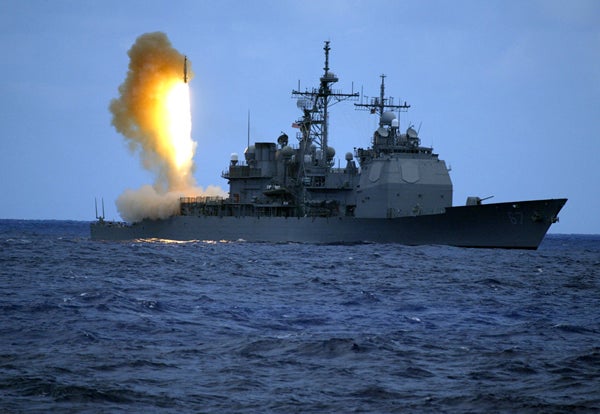Critics of Missile Defense: Wrong Since 1983 and Counting
Michaela Dodge /
Missile defense continues to come under attack despite significant advancements of the technology, especially since the United States withdrew from the Anti-Ballistic Missile Treaty in 2001, writes Peter Huessy, President of GeoStrategic Analysis, in his most recent piece. Since President Ronald Reagan’s Strategic Defense Initiative speech in 1983, critics of missile defense have been trying to convince Americans that it is in their interest to remain vulnerable to a ballistic missile threat and that building such a system would increase the risk of a nuclear war. Since 1983, critics of missile defense have been wrong.
“By the middle of this decade, if current acquisition plans continue, the United States and its allies will have in their inventory well over 1,500 interceptors,” writes Huessy. These interceptors are designed to counter adversarial ballistic missiles of all ranges, from fairly common short-range to more sophisticated multi-stage, long-range ballistic missiles. The interceptors protect the U.S. homeland, forward-deployed troops, and allies around the world. Since the Strategic Defense Initiative speech, the U.S. has conducted more than 50 successful tests of the missile defense program.
The increasing pace of ballistic missile proliferation continues to underscore the importance of the U.S. missile defense program. While the program advanced in past years, it does not keep pace with a rapidly evolving threat. In addition, President Obama dramatically scaled down the funding for the program in fiscal year 2010, and the program failed to make up the lost ground in subsequent budgets.
The Administration also negotiated a New Strategic Arms Reductions Treaty with the Russian Federation. This treaty recognizes a linkage between strategic offensive and defensive arms and has been used as a vehicle to limit missile defense deployments in Europe by the Kremlin. Worse still, President Obama might share Russia’s resentment regarding U.S. missile defenses. Recently he stated, “On all these issues, but particularly missile defense, this—this can be solved, but it’s important for him [talking about Russian President-to-be Vladimir Putin] to give me space.” As Heritage’s Baker Spring observes, “it is likely that whatever commitments President Obama makes to the American people regarding ballistic missile defense in the coming months will be jettisoned in favor of commitments to the Russian government to curtail U.S. and allied missile defense capabilities following the election.”
To catch up with the advancing ballistic missile threat, the United States should:
- Expand and continually improve the Navy’s proven and popular sea-based Aegis missile defense system.
- Pursue and expand advanced integration of the various components of a layered missile defense system, including ground-based interceptors.
- Develop and deploy space-based missile defenses, particularly space-based interceptors, to counter ballistic missile attacks.

